Is Lotte Kopecky's bog-standard Specialized Crux proof that you don't need wide tires and fancy suspension systems for gravel racing?
Kopecky finished second at Gravel Worlds on a bike with minimal modifications
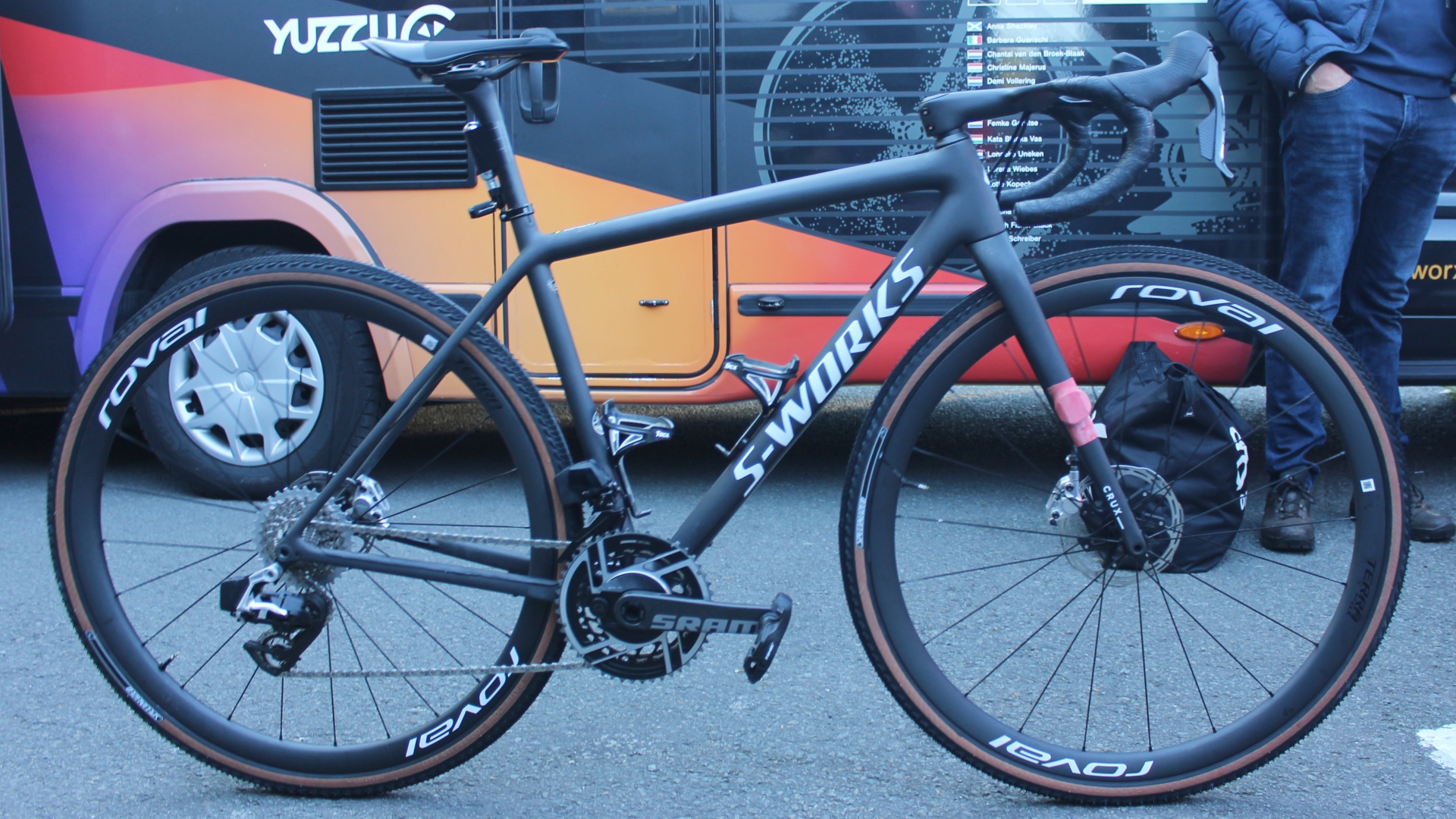

Over the last decade, the gravel bike genre has done nothing but diversify.
A shopping experience that would once leave you presented with just a handful of fairly samey bikes, is now a decision making process dominated by tyre width choices, slacker or steeper geometry, aerodynamics, and in some cases even suspension setups.
But are we overcomplicating things? Second place finisher at the UCI Gravel World Championships, Lotte Kopecky, seems to think so.
Kopecky's Specialized S-works Crux
The Belgian machine and today's silver medalist provided some pretty strong evidence that we are. The Belgian rode to the silver medal position on what can only be described as a bog standard gravel bike. Sensible tyres, road bike gearing, and no suspension in sight.
For her maiden UCI Gravel World Championships, Kopecky opted for a custom build from trade team sponsor Specialized, choosing the Specialized S-works Crux as a foundation.
The Specialized Crux is the more traditional of the American bike giant's gravel bike lineup, posing more racey geometry than its more exploration-friendly brother, the Diverge. The bike is marketed purely on low weight, wide tyre clearance, and nimble handling - some what of a rarity in a time where aerodynamics is beginning to grip the gravel scene.
Interestingly, Kopecky's bike did not have a Universal Derailleur hanger, which would suggest that she was still riding the now-outdated Specialized Crux frameset.
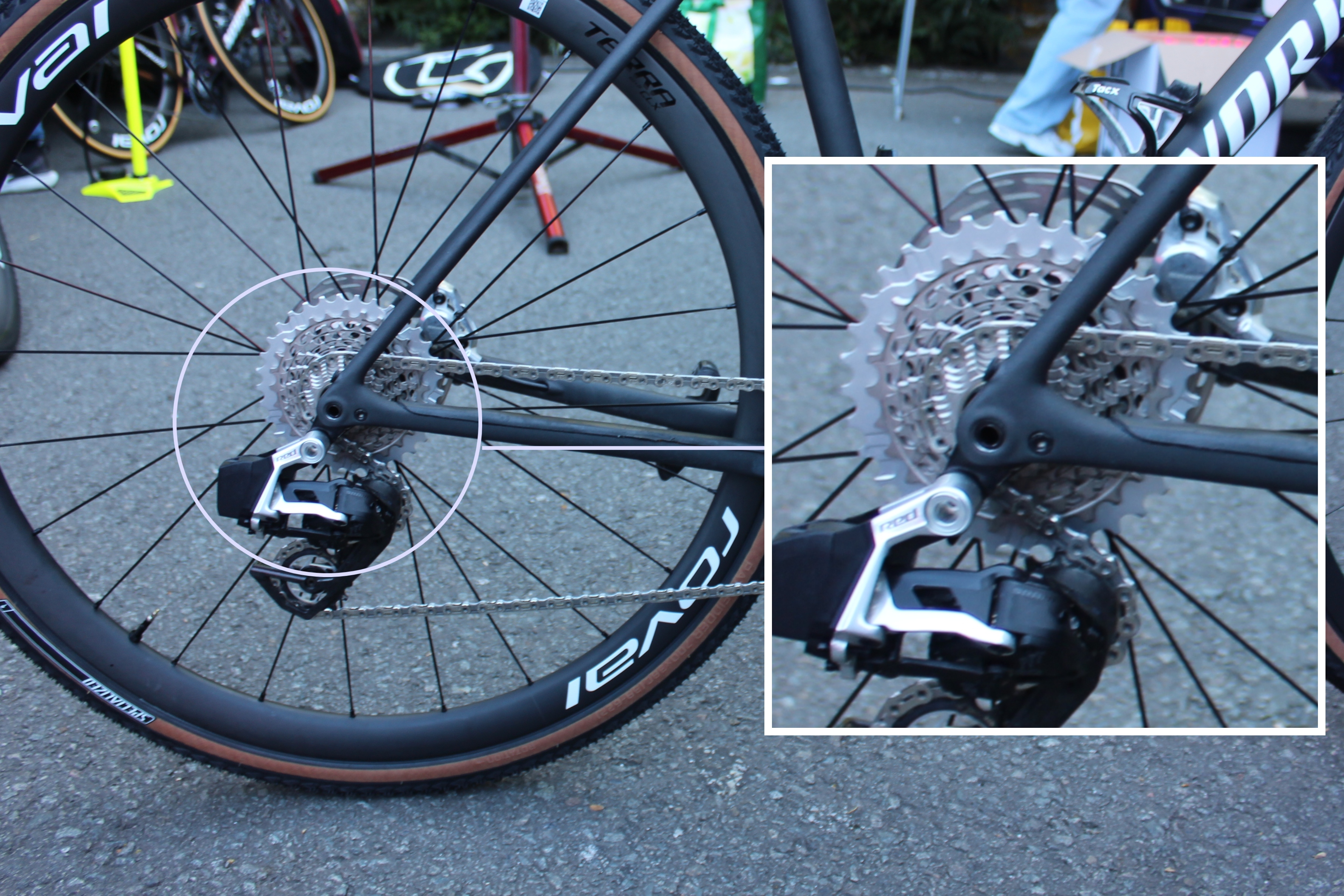
A closer look reveals the old style Crux frameset.
Believe it or now, there are only two other components on Kopecky's bike that can be traced back to the world of gravel - the wheelset, and the tyres.
For rolling duties, Kopecky opted for a set of the ultralight Roval Terra CLX II wheels. Weighing in at a feathery 1250g (claimed) for the pair, the wheels measure up 32mm deep, and feature a 25mm internal rim width, with a fairly wide 30mm external rim width. Specialized has remained stubborn when it comes too hookless too, continuing to opt for a hooked rim profile on its high end gravel wheels.
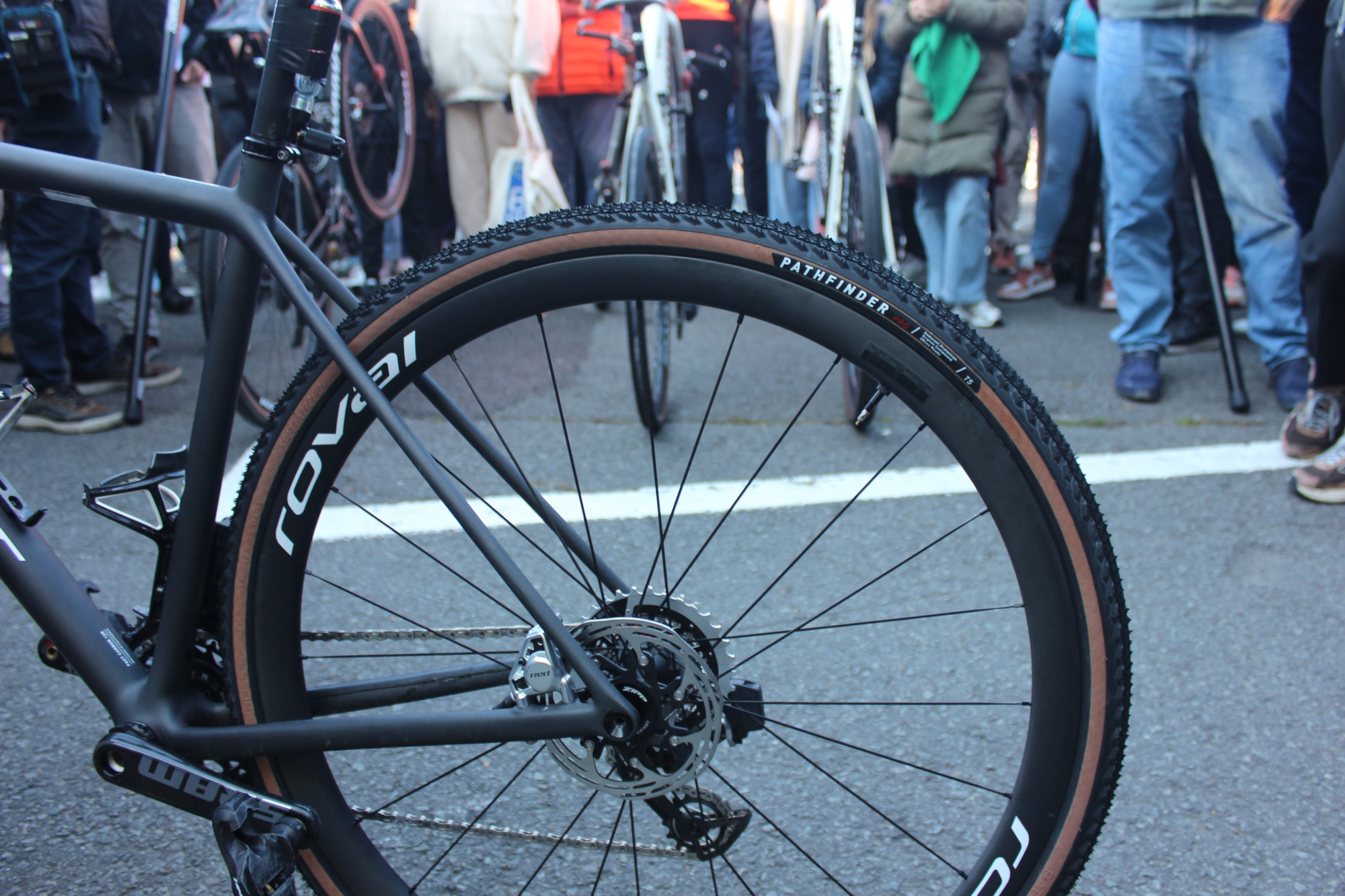
Roval wheels and Specialized Pathfinder tyres complete an all-American suite of componentry.
The Roval's were set up in a tubeless configuration with Specialized's own Pathfinder gravel tyres. The Pathfinders have become quite a popular choice among gravel racers over the last couple of years, and feature a slick band of rubber in the centre, sandwiched edges with deeper tread pattern, aiming to keep things fast on the flats, yet still grippy on the corners.
An SD-Worx team mechanic told Cycling Weekly that Kopckey was not using tubeless inserts either, keeping it simple with a sealant only strategy.
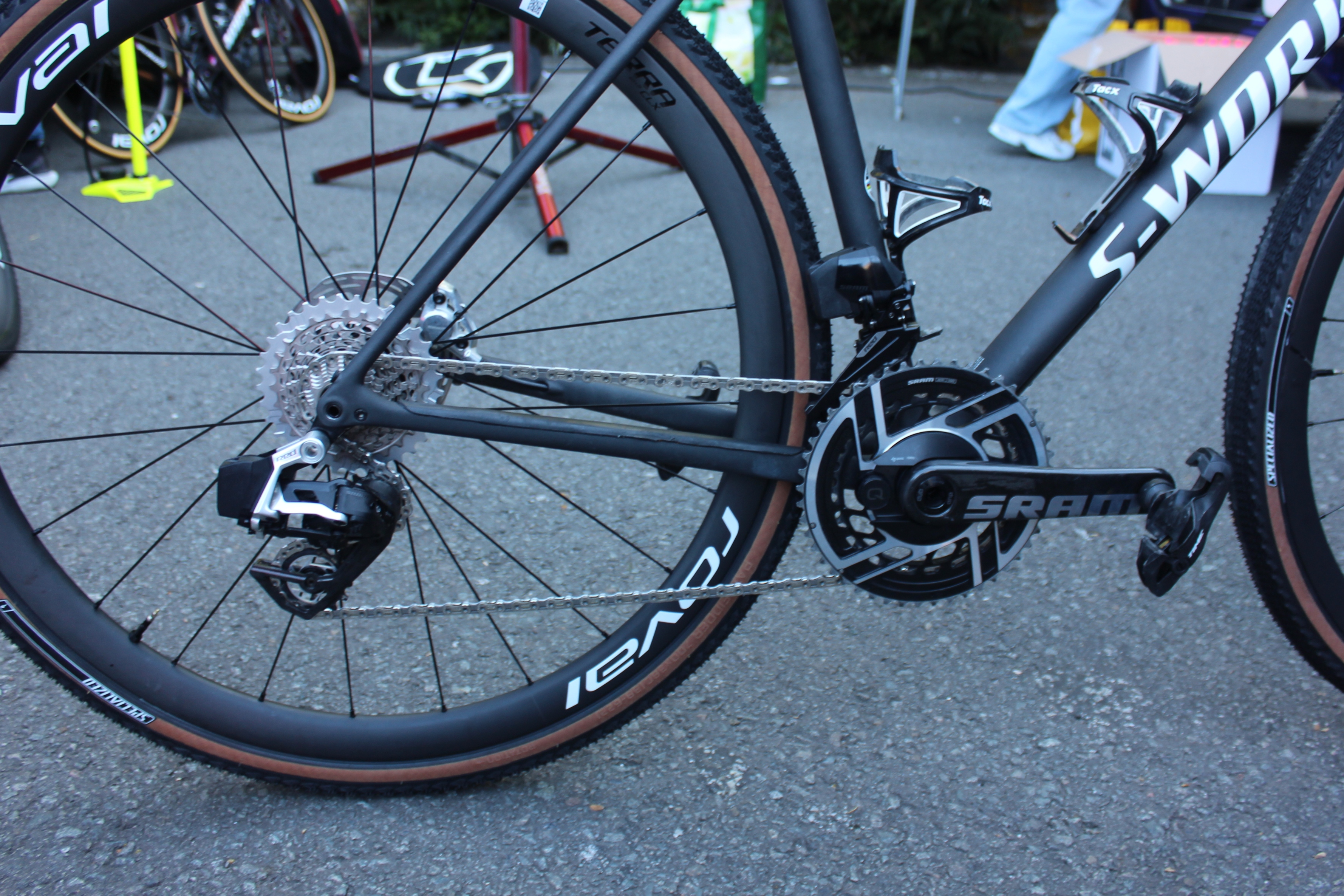
Road bike gears and a road bike cockpit for Kopecky.
Another slight surprise was that Kopecky was not using the newly released Sram Red AXS XPLR groupset, instead choosing to ride a complete road bike groupset, complete with traditional two by setup with 48/36 chainrings.
Once again straight out of the road bike playbook, was the Roval Rapide CLX cockpit. Kopecky seemed keen to keep her contact points as familiar as possible, by using the exact same one piece carbon handlebar setup that she has been using all year to great effect on the smooth roads. The keen eyed amongst you will also have noticed the Time Xpro road cycling pedals.
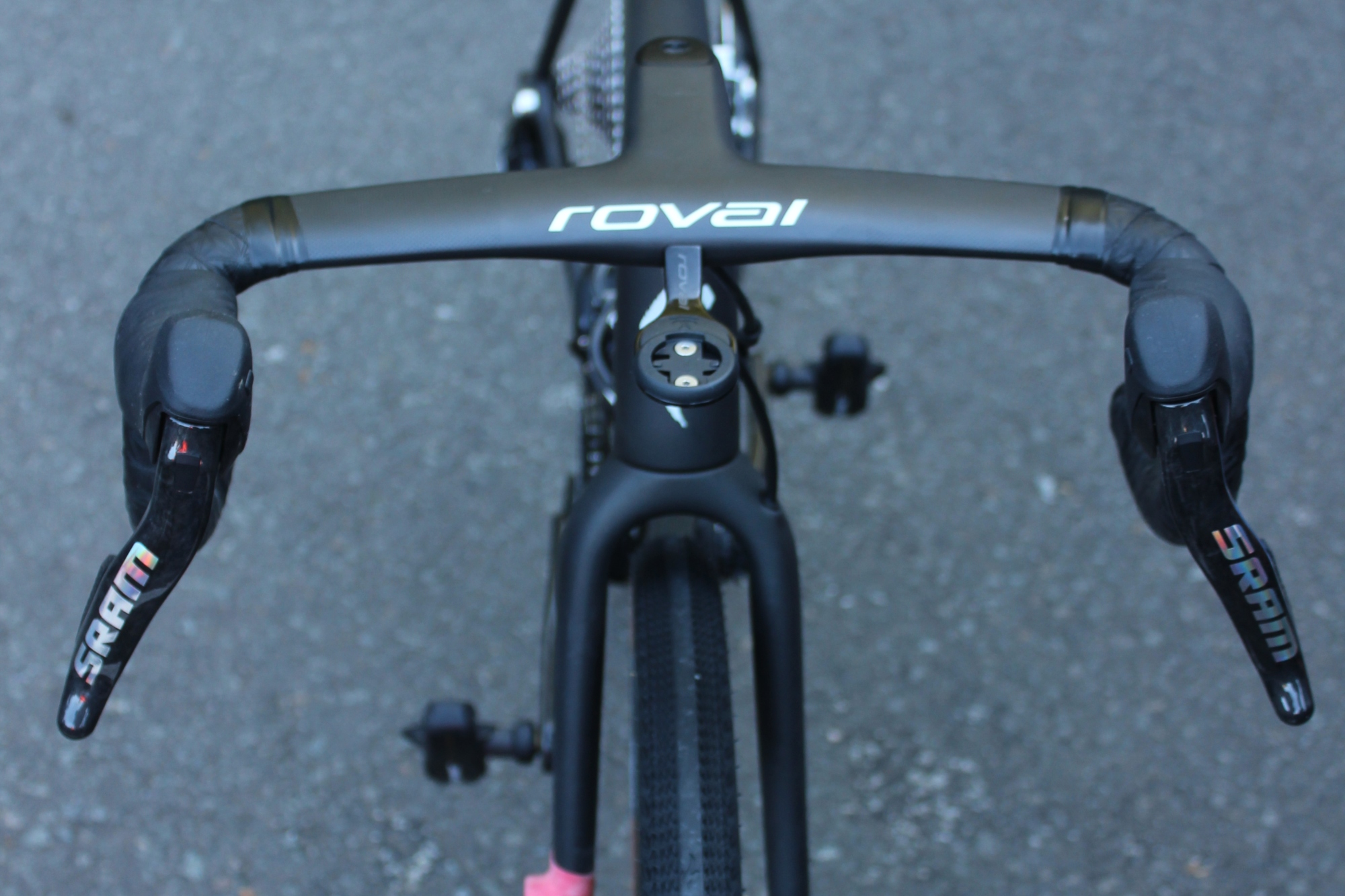
Why did Kopecky leave the tech behind?
Well, this is slightly misleading - this is still a bike packed with tech.
Let's not forget that Kopecky was hammering round the Forest of Brabant on far more than $10,000 worth of race bike, even if it was a slightly older frameset.
In all likelihood, the decision to opt for road bike components was probably one of familiarity. Until today, Kopecky had never raced a gravel race before, and therefore has never really had a chance to fettle around getting the perfect setup.
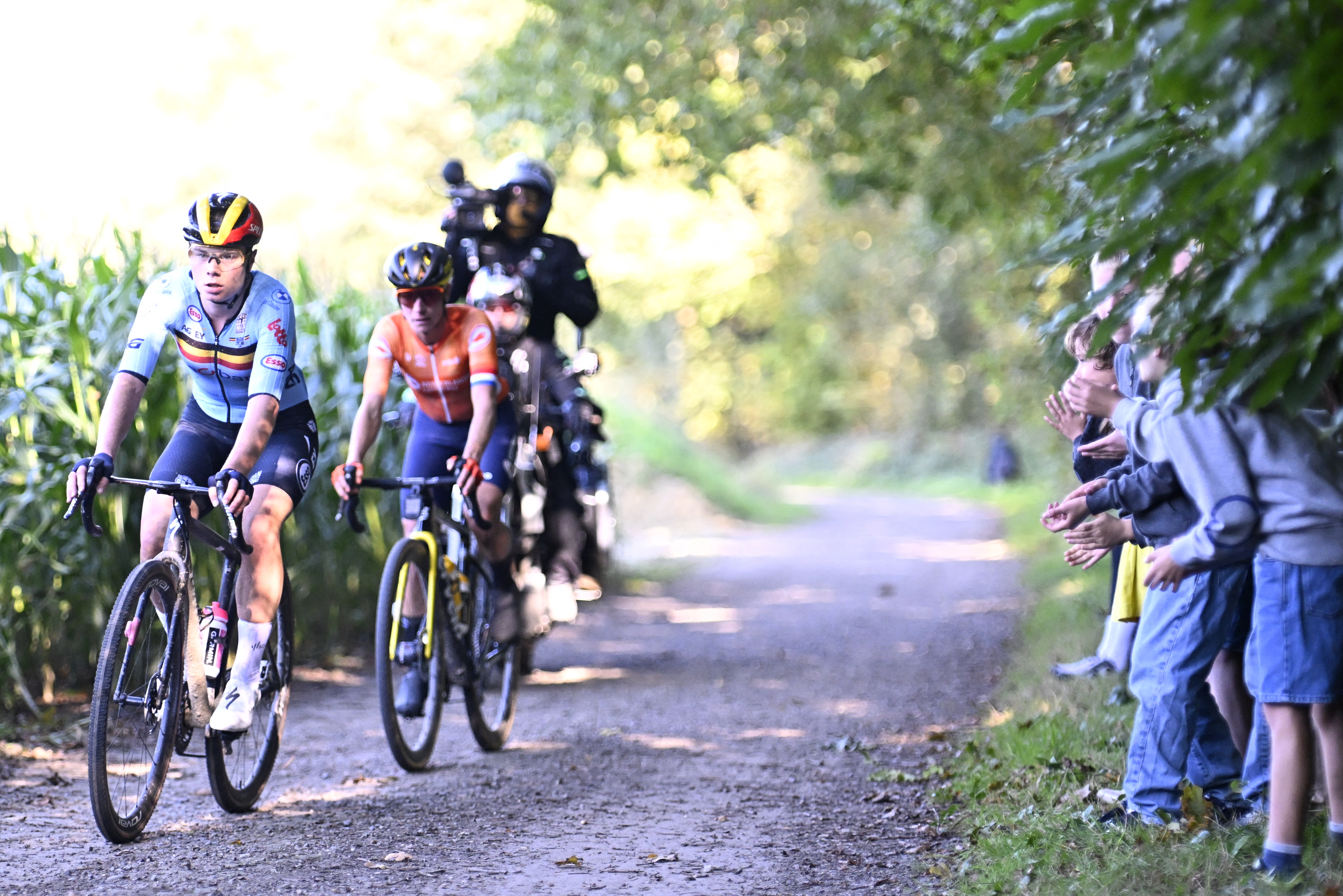
Kopecky, off the front with eventual winner, Marianne Vos
The safe option then, would be to keep the contact points the same, and try to apply the most similar bike fit possible to the new gravel bike, all the while relying on her bike handling prowess to do the talking.
It's also worth bearing in mind that European gravel is totally different to the type of terrain you are likely to encounter at a race such as Unbound. The 2024 UCI Gravel World Championships course is relatively tame compared to other gravel races around the world, making it far easier to run simpler setups on race day.
Nonetheless, Kopecky's silver ride today is proof that with the right legs and the right skills, you don't necessarily need a suspension fork and 2.1" tyres to race gravel.
Re-inflatable tyres however? Well that's a whole other story...

Thank you for reading 20 articles this month* Join now for unlimited access
Enjoy your first month for just £1 / $1 / €1
*Read 5 free articles per month without a subscription

Join now for unlimited access
Try first month for just £1 / $1 / €1
Get The Leadout Newsletter
The latest race content, interviews, features, reviews and expert buying guides, direct to your inbox!

Joe is Cycling Weekly's tech writer. He's always had a love for bikes, since first riding a two wheeled steed before the age of four. Years down the line, Joe began racing at 16, and enjoyed great experiences internationally, racing in Italy, Spain and Belgium to name a few locations. Always interested in tech, Joe even piloted his Frankenstein hill climb bike to a Junior National Title in 2018. After taking a step back from elite level racing in April 2022, Joe joined our team as a freelancer, before becoming Tech Writer in May 2023.
-
 Tadej Pogačar flies to dominant victory at La Flèche Wallonne
Tadej Pogačar flies to dominant victory at La Flèche WallonneSlovenian takes second win at Belgian classic ahead of Kévin Vauquelin and Tom Pidcock
By Tom Thewlis
-
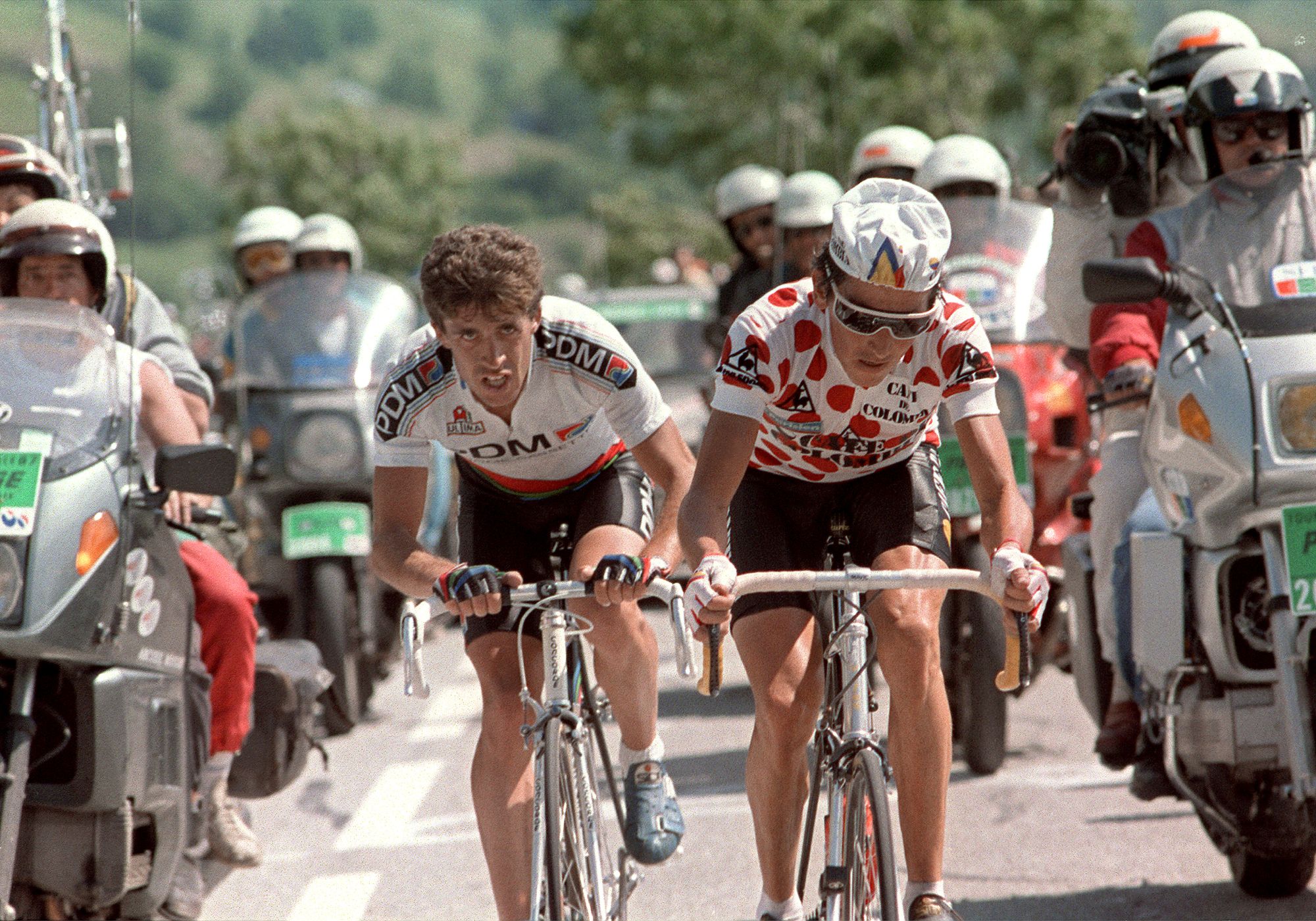 Colombian climbing star and former Vuelta a España winner Lucho Hererra could be investigated over murders of four people
Colombian climbing star and former Vuelta a España winner Lucho Hererra could be investigated over murders of four peopleA judge has called for an investigation into the former Vuelta winner who is alleged to have worked with paramilitary groups in Colombia
By Tom Thewlis